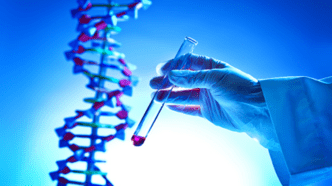Once hailed as a pioneer in consumer DNA, 23andMe has filed for Chapter 11 bankruptcy after years of financial troubles, fierce competition, and eroding consumer trust. The company, once valued at $6 billion after its 2021 SPAC debut, saw its worth crash to just $50 million by early 2025, with shares languishing below $1.
Founded in 2006 by Anne Wojcicki, Linda Avey, and Paul Cusenza, 23andMe set out to democratize genetic testing and empower individuals with personalized health insights. Wojcicki, a Yale biology graduate and former healthcare investment analyst, led the company through its highs and lows until stepping down as CEO in March 2025 — just days before the bankruptcy filing — to mount an independent bid to buy back the company.
Despite raising over $1 billion from high-profile investors like Google Ventures, Sequoia Capital, and Fidelity, 23andMe struggled to transform its early success into sustainable growth. The company never reached profitability in its 18-year run, facing the same fate as DeCode Genetics, which went bankrupt in 2009.
The turning point came with 23andMe’s 2021 SPAC merger, which valued the company at $3.5 billion and raised $600 million. But the excitement didn’t last. By 2025, slowing consumer demand, privacy scandals, and failed diversification efforts pushed its market cap below $300 million.
In 2024 alone, 23andMe posted a staggering $285 million net loss. Debt soared past $500 million, leaving the company no choice but to seek bankruptcy protection. Chief Financial Officer Joe Selsavage has taken over as interim CEO, tasked with leading restructuring efforts and possibly finding a buyer.
Wojcicki’s attempt to buy out the company in mid-2024 for 40 cents per share was rejected. Soon after, 23andMe shut down its in-house drug discovery arm and laid off nearly 40% of its workforce in a last-ditch effort to cut costs.
At the heart of 23andMe’s downfall was a business model that relied heavily on one-time kit sales. After millions of curious customers took their DNA tests, there was little reason to return. The company struggled to create lasting value, failing to build a subscription model or deeper engagement that could sustain growth.
A high-profile partnership with GSK in 2018 aimed to leverage its genetic database for drug development. Despite early optimism that genomics could improve pharmaceutical success rates, the collaboration fell short of delivering commercial returns.
Post-pandemic, interest in consumer DNA kits dropped by over 50%, while concerns over data privacy worsened. By 2023, 23andMe’s core business was shrinking, and its attempts to pivot into healthcare subscriptions didn’t gain enough traction.
Data Breach Shatters Consumer Trust
The privacy concerns that had long haunted 23andMe became reality in October 2023. Hackers accessed user profiles, including names, birth dates, ethnicities, and photos. Though the breach directly impacted just 0.1% of accounts, attackers used the company’s “DNA Relatives” feature to expose data from 6.9 million users — nearly half of 23andMe’s customer base.
The fallout was severe. In 2024, 23andMe agreed to a $30 million class-action settlement, further depleting its finances. California authorities even urged customers to delete their DNA data, adding another blow to the brand’s reputation.
As 23andMe floundered, competitors thrived. AncestryDNA dominated the genealogy space, while MyHeritage offered global users deeper ancestral insights. New players like Helix and Nebula Genomics launched AI-driven, privacy-focused platforms that resonated with a wary public.
Meanwhile, startups like Tempus and Color Genomics integrated predictive analytics and personalized healthcare — something 23andMe tried but failed to achieve. By the time 23andMe pushed into healthcare, competitors had already captured market share and trust.
What Happens to Your DNA Data Now?
With 23andMe’s bankruptcy filing, the fate of millions of DNA samples and personal data is uncertain. The company promises continued operations during restructuring and insists that customers will retain access to their data and subscriptions.
However, privacy advocates remain concerned. The company’s vast genomic database could attract acquisition bids from biotech or AI companies eager to leverage the data for personalized medicine or drug discovery — raising fresh questions about data security.
For all its early promise, 23andMe’s bankruptcy is a sobering reminder of how tough it is to sustain a pure genomics business. Despite its pioneering role, the company’s failure to pivot, combined with a flawed one-time sales model and a catastrophic data breach, proved insurmountable.
Now, as 23andMe seeks a lifeline, the industry is watching closely. Whether it’s acquired, rebuilt, or disappears altogether, one thing is clear — the path from genetic curiosity to lasting business success is fraught with challenges.













